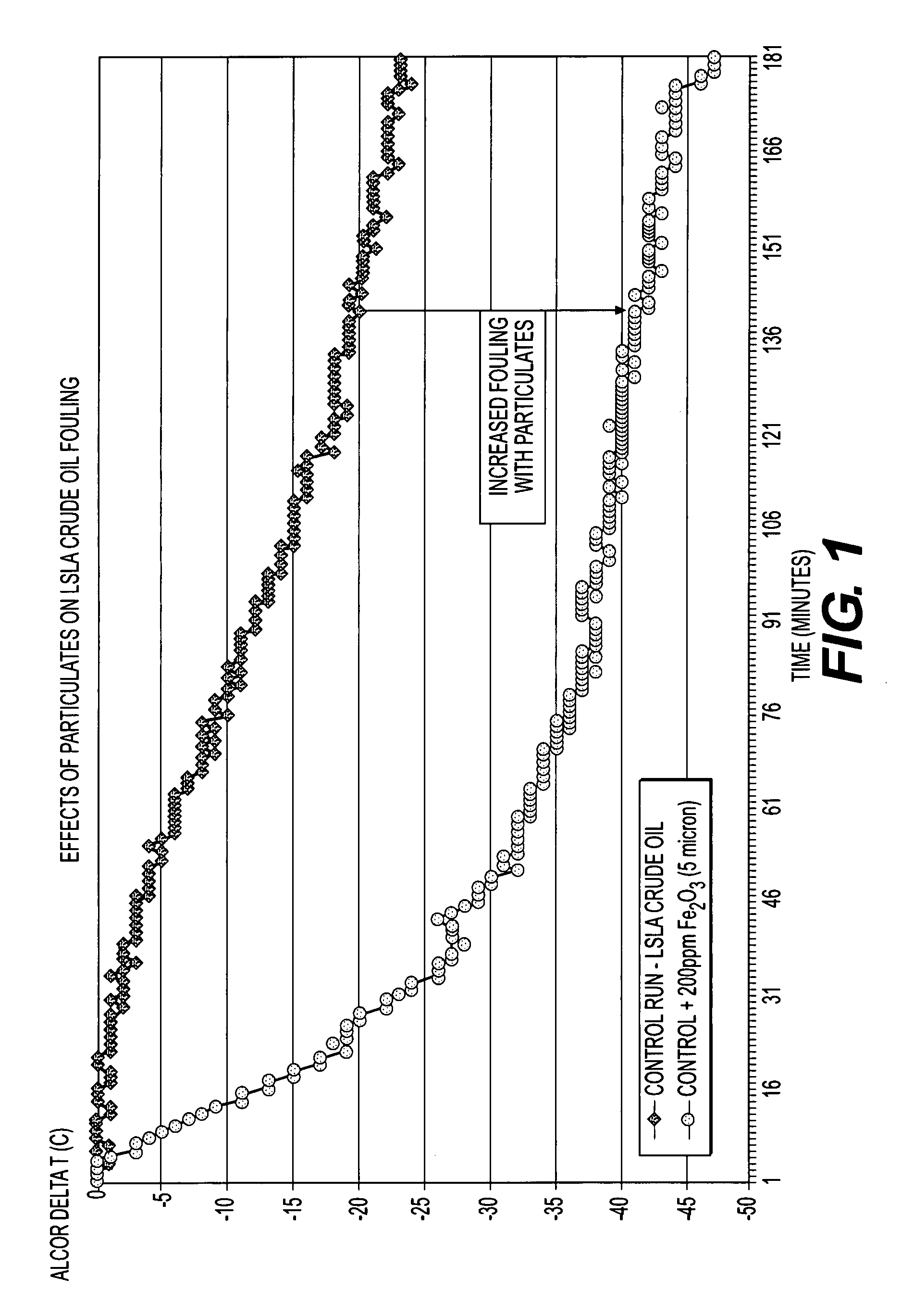Method of blending high tan and high SBN crude oils and method of reducing particulate induced whole crude oil fouling and asphaltene induced whole crude oil fouling
- Summary
- Abstract
- Description
- Claims
- Application Information
AI Technical Summary
Benefits of technology
Problems solved by technology
Method used
Image
Examples
Embodiment Construction
[0034]The present invention will now be described in greater detail in connection with the figures. The present invention aims to reduce fouling in heat exchangers and other components located within a refinery. This aim is achieved by a blended base crude oil, which may consist of a whole crude oil, a blend of two or more crude oils or fractions thereof with a predetermined amount of a high solvency dispersive power (HSDP) crude oil. The addition of HSDP crude oil mitigates both asphaltene induced fouling and particulate induced / promoted fouling. The high Sbn of these HSDP crude oils allows for the enhanced solubility of any asphaltenes in the rest of the crude oils and / or blends. The presence of TAN is believed to help disperse the particulates in the crude oil blend which prevents them from adhering to the heated surface. In order to achieve the reduction in fouling, the HSDP crude oil should have a total acid number (TAN) of at least 0.3. Higher TAN levels may result in improved...
PUM
 Login to View More
Login to View More Abstract
Description
Claims
Application Information
 Login to View More
Login to View More - R&D
- Intellectual Property
- Life Sciences
- Materials
- Tech Scout
- Unparalleled Data Quality
- Higher Quality Content
- 60% Fewer Hallucinations
Browse by: Latest US Patents, China's latest patents, Technical Efficacy Thesaurus, Application Domain, Technology Topic, Popular Technical Reports.
© 2025 PatSnap. All rights reserved.Legal|Privacy policy|Modern Slavery Act Transparency Statement|Sitemap|About US| Contact US: help@patsnap.com



